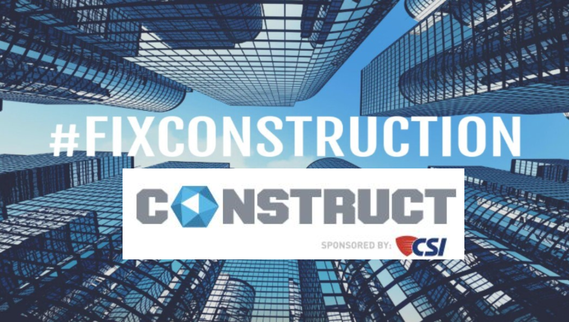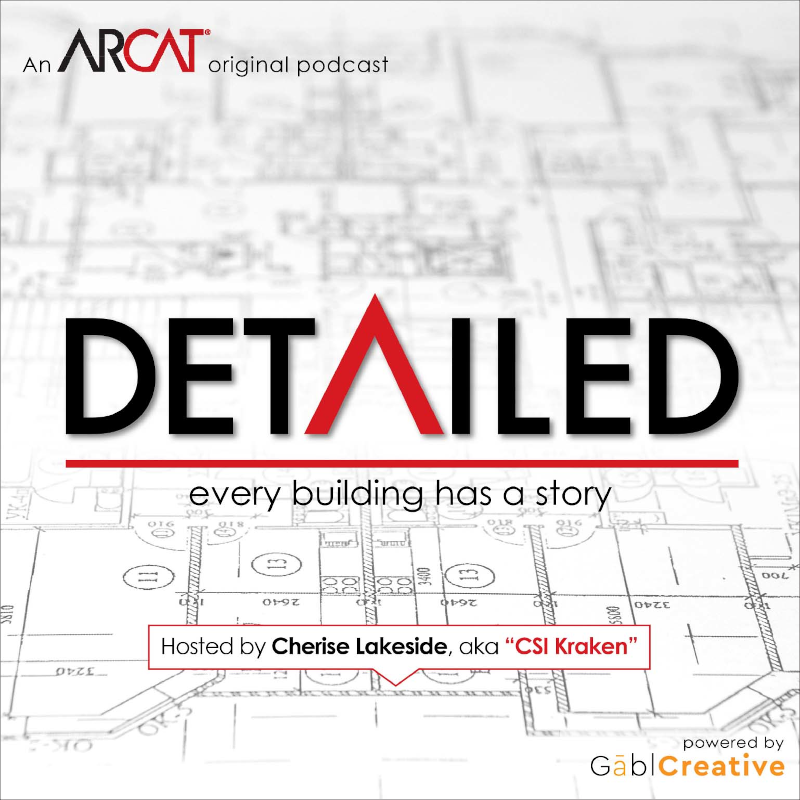|
Contributed by Randy Nishimura Construction insurance, bonds, and warranties are among the most confusing and inscrutable matters requiring the everyday attention of everyone involved with design and construction. Consequently, it’s important for building industry professionals to understand their various forms and the salient features of each that distinguish their fundamental purposes.
Accidents happen. Losses occur. Things break or don’t work like they’re supposed to. To “fix” these problems entails prescribing responsibilities and providing assurances necessary to safeguard the interests of the various parties involved in today’s increasingly complex building processes. This is the role of construction insurance, bonds, and warranties. In a nutshell, they may be defined and distinguished as follows: Construction Insurance Fundamentally, insurance is a financial risk management tool, the primary concept of which involves the transference of the risk of potential financial loss from the insured to an insurance company in exchange for a monetary premium. Most everyone is familiar with insurance in one form or another, such as automobile insurance, homeowner’s insurance, or health insurance. Construction industry insurance is similar, protecting policy holders from catastrophic financial losses in the event of a claim or occurrence. Construction insurance includes coverage for general liability related to claims for bodily injury, property damage, personal injury, and others that can arise from construction-related activities. There are also professional liability policies, that protect individuals and companies from the full cost of defending claims of negligence, primarily for errors & omissions (after all, humans sometimes will make mistakes). Other forms of liability insurance include policies for managerial liability, and liability risks related to pollution, the actions of company directors and officers, cyber activities, and workers’ compensation. Excess liability policies provide coverage limits above those of an underlying liability policy, and are sometimes a contractual requirement on construction projects. Construction insurance also includes property insurance. Builder’s risk policies offer coverage in the event of property losses, protecting the insurable interests in materials, fixtures, and/or equipment being used in the construction or renovation of a building. Builder’s risk insurance can be purchased either by the owner or the general contractor, depending upon the terms of the Contract for Construction. It is usually a statutory requirement for public work. Inland marine coverage (a peculiar term) protects property in transit, as well as the instrumentalities of transportation (the bridges, roads, and piers, etc.). Property insurance purchased by one party can also provide coverage for the business or personal property of others, who become additional named insureds on the policy. This kind of coverage is often used in the instances where an owner may rely upon the insured contractor to provide protection of property the owner has paid for but is not yet part of the completed work (such as for materials stored in an off-site warehouse). Some cautionary words about construction insurance: Insurance, the saying goes, is like Swiss cheese. There’s a lot of substance to it but a lot of holes as well. It’s in everyone’s best interest to understand required and recommended coverages for any construction project. It’s also important to avoid limiting coverage through poor contract language. Equally important for everyone involved with a construction project is to review contractual requirements related to indemnification with their respective insurance providers. Finally, coordinating, verifying, and tracking certificates are keys to effectively managing insurance products.
4 Comments
Contributed by David Stutzman Design and construction projects require an enormous number of participants to complete each facility. The basic teams include owners, architects, contractors, and suppliers. The lines of communication are well defined, especially after the construction contract is executed. But how are the teams collaborating before the contract is signed?
In no particular order… Architect-Owner The relationship between the owner and architect is well defined by the agreement for the design services. According to AIA agreement Document B101, the owner and architect share information at each design phase. The owner provides the project program and budget. The architect reviews the information and advises the owner if there are any concerns before the design is started. They discuss alternatives for the design approach and for the construction project delivery method. The communication is nearly continuous as the design is refined and solidified while progressing to the completion of the construction documents. Contractor When the owner retains a contractor or construction manager for preconstruction services, the architect communicates with the contractor about cost, schedule, and constructability. When the architect and contractor are collaborating during design phases, the owner can have greater confidence that the ultimate design will meet the owner’s budget and schedule. Supplier Product representatives, whether manufacturer’s direct employees or independent representatives, will meet with the architect team, including the specifier, to advise about the use of specific products for particular applications. The discussion is particularly valuable to resolve unusual conditions, to verify the product performance will meet the owner’s project requirements, and to understand the product cost implications created by the design decisions. Specifier The specifier typically begins by challenging the architect – asking many questions to determine the design intent and confirm project systems, assemblies, products, and materials. The Q&A process becomes a dialog to ensure all aspects of the project will be specified correctly so the owner realizes the quality expected in the completed facility. The specifier may recommend alternative systems and products that offer advantages to the project. And the specifier will connect the architect to suppliers, subcontractors, and other resources needed to solve particular design problems. The architect and specifier discuss alternatives to determine the optimal design solutions for each application. Subcontractor Subcontractors provide invaluable real-world experience, with both product and installation. They can advise architects and specifiers about the practicality of construction details, installation sequencing, system costs, and product availability through local distribution channels. The owner may engage subcontractors during design to provide design assist services to develop project specific details and shop drawings before design is complete. Unlike suppliers who typically furnish product prices only, subcontractors can provide installed system costs that reflect the expected project complexity. Availability can be a significant issue, especially for short duration projects and just-in-time manufacturing. When architects select the perfect product that is not available in time, project completion may be delayed. Collaboration Traditionally, the subcontractor is rarely given an opportunity to contribute during the design process, except as part of a design assist process. The architect team, including specifiers, tends to rely on suppliers for product and system information. Suppliers are rarely responsible for complete systems, while subcontractors always are responsible for complete systems. Be sure to include subcontractors in the process. Each team and every team member has a contribution to make. The best design responses will take advantage of experience and expertise that is readily available. Together, through active collaboration before the construction contract is signed, the teams can help ensure the owner’s project requirements will be met when construction is complete. (Editor's note: This blog post, along with numerous others, appeared originally on the Conspectus website. You can view an archive of Conspectus' posts here.) Contributed by Eric D. Lussier 2017 will be my seventh straight #CONSTRUCT conference. For those unaware, CONSTRUCT is the Construction Specifications Institute's annual meeting and affiliated trade show, now presented by Informa. I attended my first CONSTRUCT with the full education package in 2011 in Chicago, I returned to Phoenix in 2012, Nashville in 2013, Baltimore in 2014, St. Louis in 2015 and Austin in 2016. For this year's conference, taking place September 13-15, 2017, at the Rhode Island Convention Center in Providence, Rhode Island, I had the privilege of serving on the conference Advisory Council with a slew of other construction industry professionals. We assisted in culling down the 200+ submitted proposals down to over 40 available presentations, where participants at CONSTRUCT can earn over a year’s worth of CEUs, including 18.5 AIA LUs/HSW. What's new at CONSTRUCT for 2017? Well, for me, I'll be presenting. TWICE! I am honored to deliver one of the Featured Sessions on Day 1, Wednesday, September 13th, with my partner-in-crime-and-education, and co-founder of this blog, Cherise Lakeside. Titled 'Let's Fix Construction: An Interactive Luncheon', it is based on this website and blog and we do hope that over a lunch meeting we can demonstrate how you can improve communication, collaboration, unique ideas and the sharing of perspectives from different disciplines. Please more on this session here. On the final morning of CONSTRUCT, you can find Cherise and I back together to co-present 'She’s a Specifier, He’s a Product Rep: Different Roles, Same Goals'. We hope that by representing both sides of an architectural sales call, we will be able to educate both parties in a dynamic manner. Registration is now open for CONSTRUCT, which is the only dedicated national event specifically designed to provide the commercial building team with real-world, practical products and education solutions. The Exhibit Hall will be packed with 200+ exhibitors spanning over 28,000+ net square feet. covering everything from air barriers to fire protection systems, coatings to architectural hardware, and much more, Exhibiting companies will showcase products, services and technologies for commercial building industry professionals who design, build, renovate or operate in the built environment. You just missed out on saving 35% on your registration fees. Rates are now up and posted at https://www.constructshow.com/en/register.html. You can read the official press release here announcing registration. The press release which announces the Keynote, Game Changer and Featured Sessions (which includes Let's Fix Construction) and Speakers for 2017 can be read here. If you are interested in a FREE Exhibit Hall Pass, you may click on the graphic below to register for one. If you are unable to make CONSTRUCT in 2017, and are interested in the LIVE #FixConstruction program, you can host your ow! Please visit our Live Events page here which also includes the Portland, Oregon Chapter of CSI hosted event on July 27th at the Ankrom Moisan Offices. I hope to see you in Providence. Contributed by Karl Michels The recent growth of programs advocating sustainable design is numerous: LEED, Living Building Challenge, mindful MATERIALS, etc. Through all of these, though, there seems to be a disconnect between specified products and installed items. The owner is paying for something he didn’t receive, the architect is delivering a product they didn’t envision, the contractor is building a project that is not as described, and the manufacturer missed out on a sale of a product designed for the task.
The Boss noticed a continuing pattern of building projects where there is a difference in collaboration and specification language of sustainable design between architects, engineers, and contractors and he wants me to look into it. Something’s not right in these specs and I can’t quite figure it out, but, I’m on it. My name is Specman; I carry a bunch of technical sheets. * * * * * * * * * * 8:15 AM. The sun is bright, the coffee burnt, and my head is splitting. I have been at this since 5 am this morning. I reach into the desk drawer, shake the last two aspirin out of the bottle, and knock them back with the lousy coffee. It’s going to be one of those days. Thank God for the pharmaceutical guys; they’re my helpers. The 010000 General Conditions and 018113 Sustainable Design specifications are pretty clear. Why didn’t this project get built with the appropriate materials as specified? I don’t quite get it. 9:02 AM. I phone the architectural specifier. “Specifier”, she barks into the phone. “What do you want?” She’s a hard driven cookie; smart, but tough. Billable hours are important, there’s no time for small talk. I called her Honey when I first met her; she made it quite clear she wasn’t an ex-wife or current girlfriend. Just because she was female didn’t mean she didn’t know her stuff and I would be well served to address her appropriately. She was right then and right now. She doesn’t know, however, that I call her Toots behind her back. “Look, I need some answers and I know you can give them to me”. “Yeah?” “Yeah. What’s the deal with the intent of sustainable design that only encompasses half of the project?” I ask. “What are you talking about, Specman?” she answers. “A sustainable project is sustainable throughout. We just finished issuing the documents on that LEED Plutonium Level building. You know, the one intended to be loved and cherished by the community for time immortal. We covered all the bases: Fasteners are made solely of recycled horseshoes; Ventilation is air movement generated by the wings of 100,000 Monarch butterflies and the Finishes are comprised of the most ecologically responsible building materials with a minimum 20% recycled rainbow content verified by an independent third party. What more is there?” I increasingly get the feeling I might be grabbing a tiger by the tail. “Well”, I answered, “someone else didn’t get the memo. The engineer hired by you to design the parts of the building no one sees in this same project advocated Electrical Wiring as “throughout” and Piping as “leak free.” Will that meet your sustainable design criteria?” |
AboutLet's Fix Construction is an avenue to offer creative solutions, separate myths from facts and erase misconceptions about the architecture, engineering and construction (AEC) industry. Check out Cherise's latest podcast
Get blog post notifications hereArchives
March 2022
Categories
All
|






 RSS Feed
RSS Feed
